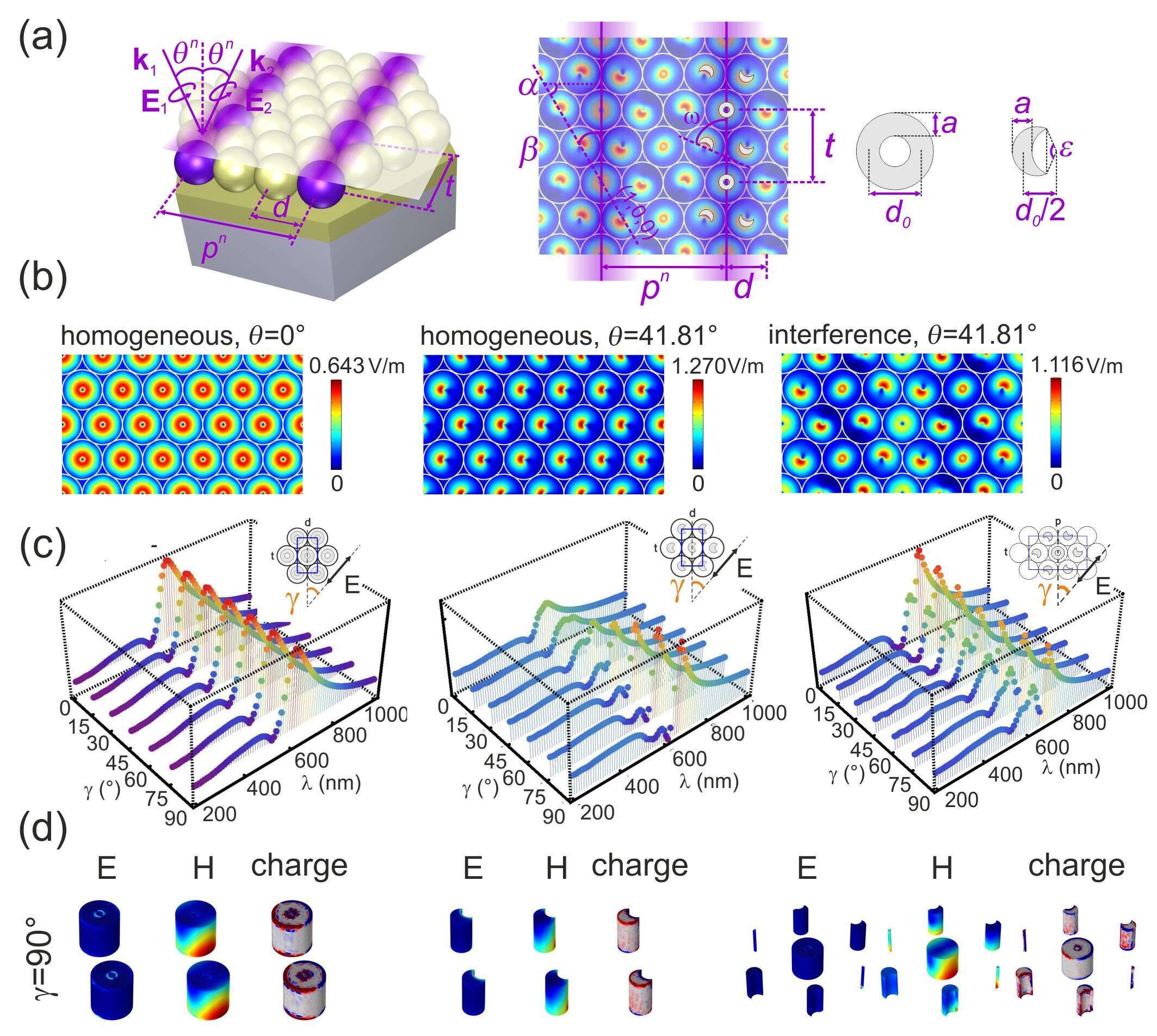
Tunable Plasmonic Properties of Rounded Object-Arrays Achievable Via Interferometric Illumination of Colloid Sphere Monolayers
Interferometric illumination of colloid sphere monolayers (IICSM) by circularly polarized beams makes possible to fabricate complex patterns consisting of wavelength-scaled arrays of rounded nano-objects. By applying the IICSM method to illuminate metal colloid sphere monolayers rectangular patterns of mini-arrays consisting of various rounded nano-objects can be generated. The IICSM method requires the perfect synchronization of a desired intensity modulation with respect to preselected colloid sphere arrays inside hexagonally close packed monolayers [1]. It was demonstrated that via IICSM method complex patterns with six independently tunable geometrical parameters can be fabricated. The spectral and near-field effects of three complex patterns, which can be generated via illumination (i) by perpendicularly and (ii) oblique incident homogeneous beam and (iii) in IICSM-configuration were studied by finite element method. The azimuthal orientation dependent spectra of hexagonal arrays of (i) nano-rings and (ii) nano-crescents, as well as of (iii) rectangular pattern of mini-arrays is presented. It is demonstrated that the (iii) rectangular pattern of mini-arrays consisting of a central nano-ring and satellite nano-crescents have unique capabilities in spectral tunability, and in tight near-field confinement. The near-field and charge distribution on these structures were inspected at several azimuthal orientations, and were compared to calculations made previously on hole-doublets achievable via illumination by linearly polarized light [2, 3].

(a) Presentation of the IICSM method and of the six independently tunable geometric parameters; (b) hexagonal arrays of (i) nano-rings and (ii) nano-crescents, and (iii) rectangular pattern of mini-arrays. (c) Azimuthal angle (γ) and wavelength (λ) dependent transmittance spectra with each unit cell used for calculation, (d) 3D near-field and charge distribution on rounded objects achievable via homogeneous illumination and IICSM at transmittance maxima arising at γ=90° azimuthal orientation of rectangular patterns of mini-arrays in a gold film.
[1] Á. Sipos, A. Szalai, M. Csete, Proc. SPIE 8323, 83232E (2012)
[2] M. Csete, Á. Sipos, A. Szalai, G. Szabó, IEEE Photonics Journal 4, 1909 (2012)
[3] Á. Sipos, A. Somogyi, G. Szabó, M. Csete, Plasmonics 9, 1207 (2014)
somogyi.aniko1@gmail.com
Powered by Eventact EMS